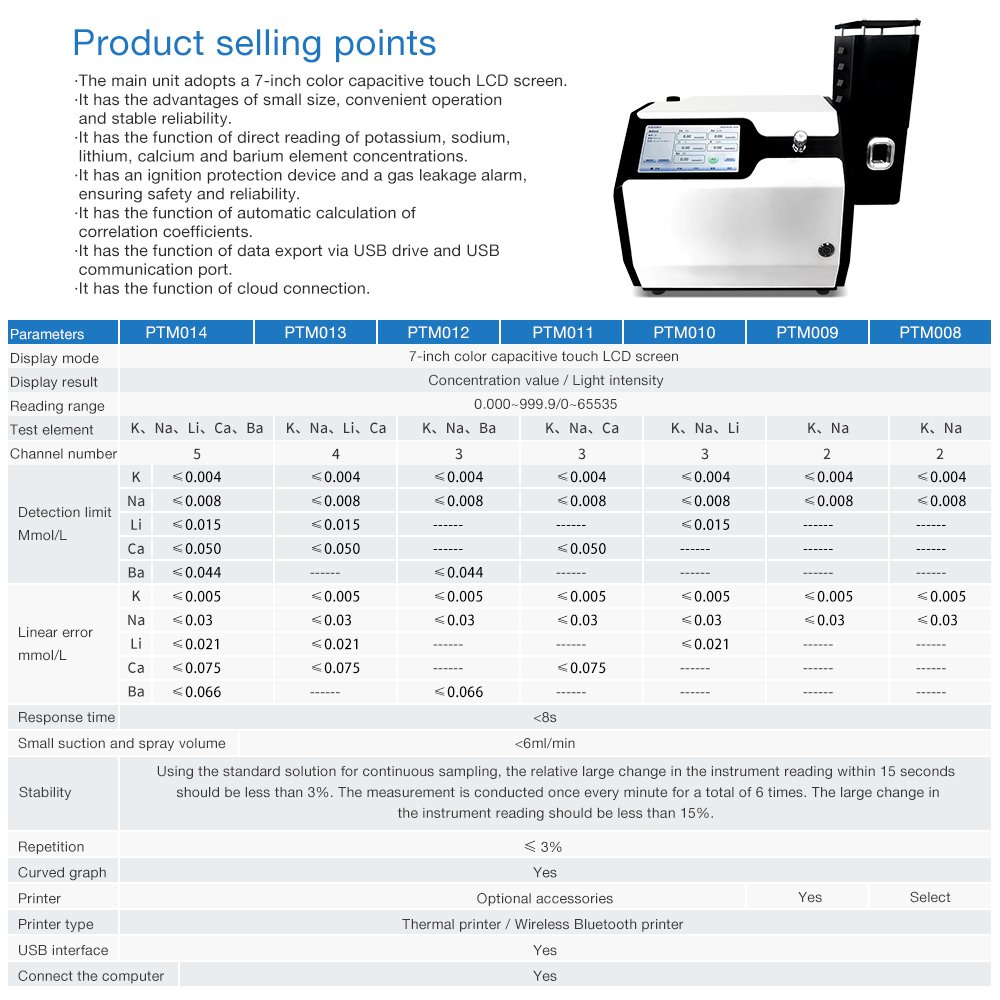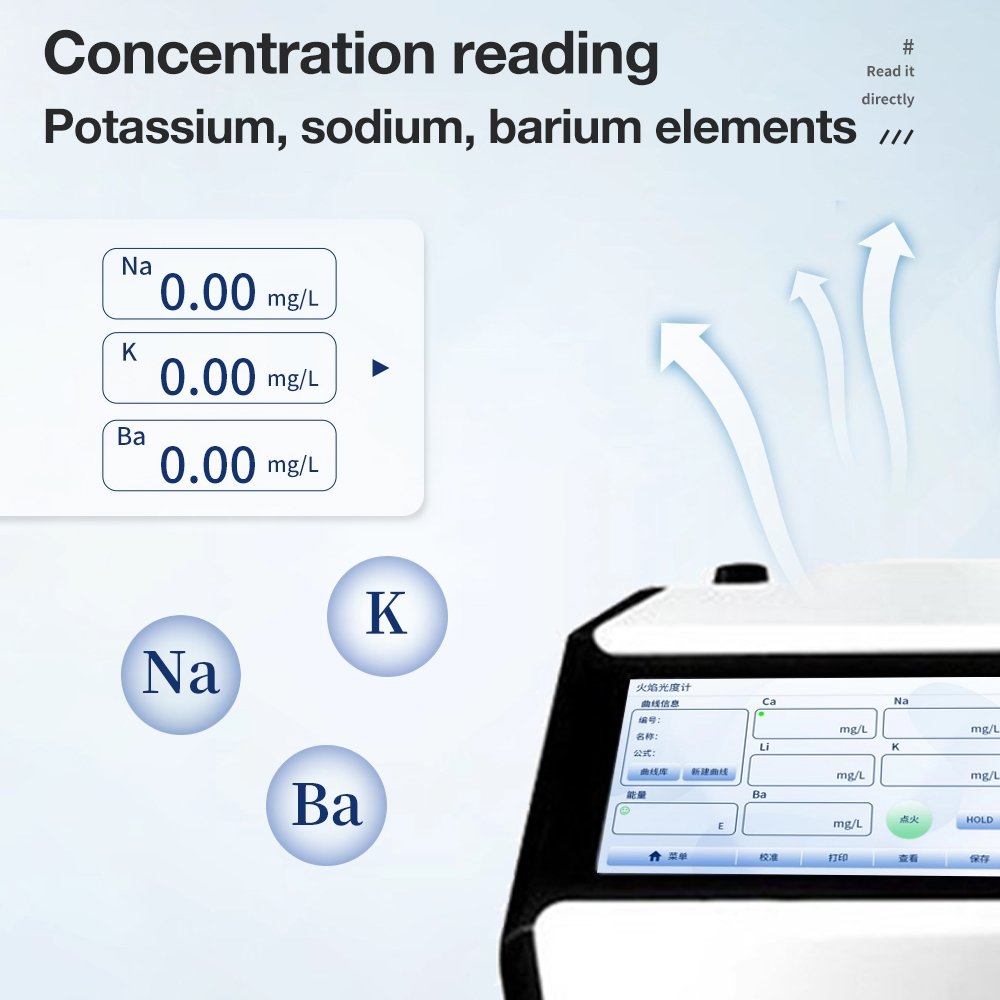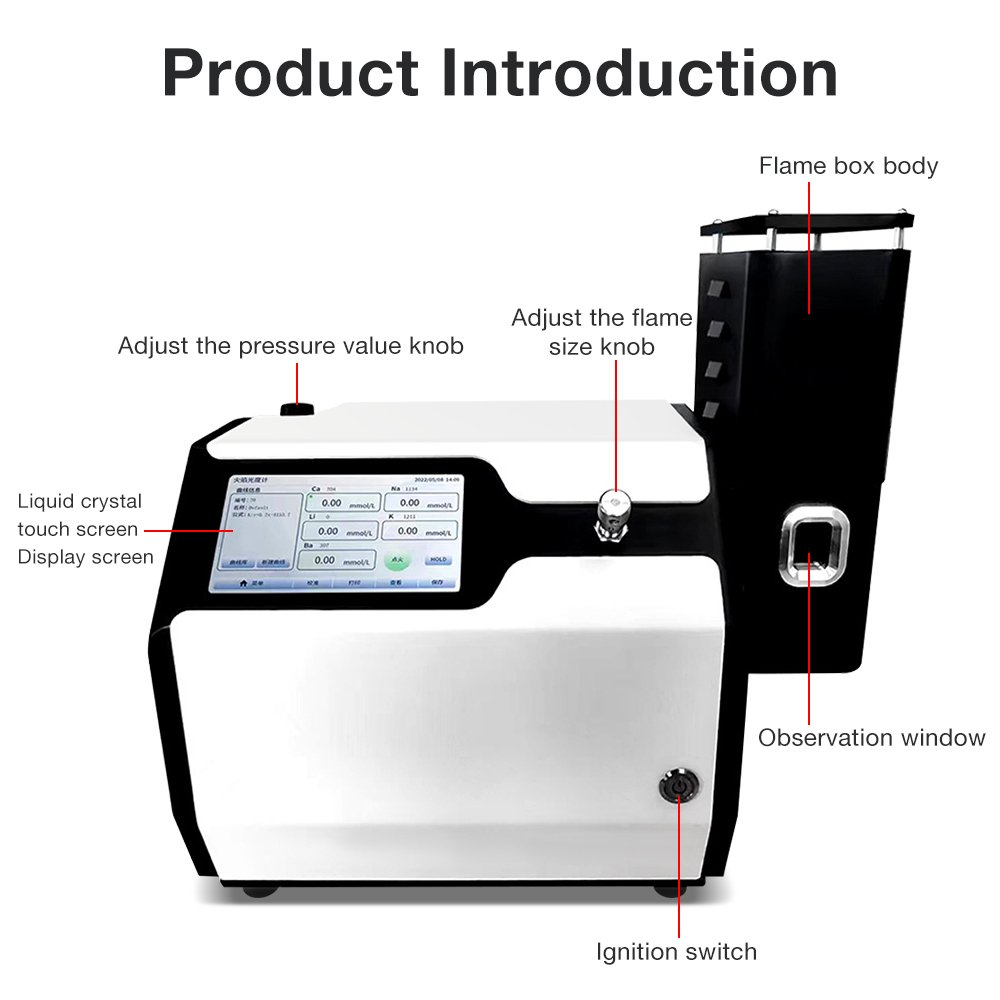- Need Free Consultation ?

(+86) 13145896507
Flame photometer is an analytical instrument used for determining the concentration of specific metal ions, particularly alkali and alkaline earth metals like sodium, potassium, lithium, and calcium.
The operating principle is based on atomic emission spectroscopy. A liquid sample is aspirated and introduced into a controlled flame. The heat from the flame excites the metal atoms, causing their electrons to jump to higher energy levels. As these electrons return to their ground state, they emit light at characteristic wavelengths.
An optical system with filters isolates these specific wavelengths. A photodetector then measures the intensity of the emitted light. The key principle is that the intensity of this characteristic emission is directly proportional to the concentration of the metal in the sample.
Quantitative analysis is performed by comparing the emission intensity of an unknown sample against a calibration curve prepared from standard solutions of known concentration.
Flame photometry is prized for its simplicity, low cost, speed, and high sensitivity for the group I and II metals. Its primary applications are found in clinical laboratories for analyzing biological fluids (e.g., serum and urine), in agricultural science for soil and plant tissue analysis, and in environmental monitoring for water quality assessment. Despite the advent of more advanced techniques like ICP, it remains a reliable and widely used tool for routine elemental analysis.









“Excellent communication, high quality product. Timely delivery. I have been cooperating for 2 years and am satisfied with the established cooperation.”